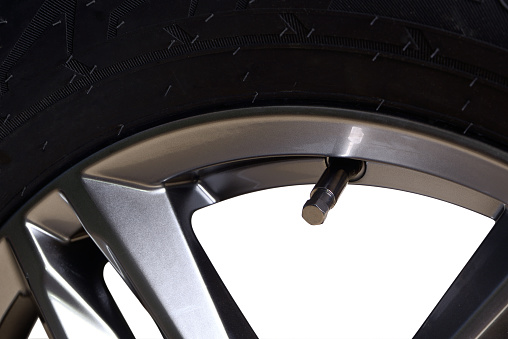All About TPMS Retrofit Kits
Tire pressure monitoring systems (TPMS) became mandatory on vehicles from 2008 onwards. Moreover, some luxury vehicles came equipped with TPMS sensors. However, many older vehicle models didn’t include tire pressure sensors. TPMS retrofit kits can be installed on vehicles that originally didn’t come with tire pressure sensors.
Here we will provide you with a complete overview of the TPMS retrofit kits, their importance, and how to install these retrofit kits.
What Is A TPMS Retrofit Kit?

A TPMS retrofit kit is designed to cater to older vehicle models that weren’t equipped with tire pressure sensors. A retrofit kit typically includes sensors that are installed on each tire\’s valve stem, as well as a receiver that is mounted in the vehicle\’s cabin
A TPMS retrofit kit is a useful safety feature for older vehicles that were not equipped with tire pressure sensors when manufactured. However, it\’s important to ensure that the kit is compatible with your specific vehicle and that it meets all relevant safety standards before installing it. It\’s also important to follow the manufacturer\’s instructions carefully when installing the kit to ensure proper operation.
Types Of TPMS Retrofit Kits
The retrofit kits come in the following two types, similar to the types of TPMS sensors:
Direct TPMS Retrofit Kits
- Uses sensors mounted on each tire\’s valve stem to measure the actual pressure
- Sensors transmit information wirelessly to a receiver in the vehicle
- Provides more precise measurements
- May require more extensive installation and can be more expensive
Indirect TPMS Retrofit Kits
- Uses the vehicle\’s existing wheel speed sensors to estimate pressure based on the rotation speed
- Compares the rotation speed of each tire to identify potential low pressure
- Typically less expensive than direct kits
- May not be as accurate or reliable, especially with non-standard tire sizes or significant tire wear
Components In The TPMS Retrofit Kits

The components included in TPMS retrofit kits can vary depending on the specific kit and manufacturer, but typically include:
- Sensors: Direct kits include pressure sensors that are mounted on each tire\’s valve stem, while indirect kits may include wheel speed sensors that work with the vehicle\’s existing sensors.
- Receiver: The receiver receives information from the sensors and displays tire pressure information on the dashboard or alerts the driver if the pressure drops below a certain level.
- Wiring: Wiring is included to connect the sensors and receiver.
- Mounting hardware: Mounting hardware may be included to attach the sensors to the valve stems and the receiver to the vehicle.
- Instructions: Instructions for installation and operation are typically included to ensure proper installation and use of the TPMS retrofit kit.
Specifications Of TPMS Retrofit Kits
| Technical Specifications | Descriptions |
| Sensor Type | Direct or indirect TPMS sensors |
| Sensor Frequency | 433 MHz |
| Pressure Range | 0-50 psi |
| Temperature Range | -40℃ to 80℃ |
| Battery Life | Up to 7 years |
| Installation Time | Up to 60 minutes |
How To Install TPMS Retrofit Kits

The installation process for TPMS retrofit kits can vary depending on the specific kit and vehicle, but here are some general steps that may be involved:
- Gather the necessary tools, including a jack, lug wrench, torque wrench, pliers, and wire cutters/strippers.
- For direct TPMS kits, the sensors need to be mounted on each tire\’s valve stem. This typically involves removing the valve cap, screwing on the sensor, and replacing the valve cap.
- For indirect TPMS kits, the existing wheel speed sensors may need to be reprogrammed to work with the new system.
- Install the receiver in a specific location in the vehicle, such as on the dashboard or under the seats.
- Connect the wiring depending on the specific kit, but typically involve connecting the sensors to the receiver and connecting the receiver to the vehicle\’s power source.
- Once everything is connected, it\’s important to test the system to ensure it is working properly.
Importance Of The TPMS Retrofit Kits
These kits are important for several reasons:
- Increased safety
- Improved fuel economy
- Extended tire life
- Retrofitting an older vehicle with a TPMS kit can help drivers comply with these regulations and avoid potential fines.
Moreover, off-road vehicles can have TPMS retrofit kits installed since off-roading includes tough terrains, putting more strain on the tires. It is crucial to choose a TPMS retrofit kit that suits the vehicle\’s make, model, tire size, and type. Some off-road vehicles may need particular sensors or wiring setups. Therefore, it is necessary to examine the kit\’s specifications before purchasing.
One can buy TPMS retrofit kits online from the leading TPMS manufacturers and suppliers. These retrofit kits come with instructions to install them. Plus, you can buy TPMS service kits to maintain the tire pressure sensors.
Keep reading the Porcsi News to learn more about tire pressure sensors and important components.

Pingback: TPMS Adapter Kits: Types, Components & More | porcsi
Pingback: TPMS Adapter Kits: Types, Components & More | porcsi